-

Rob Walrecht
Helps you to understand the Universe
A unique scale model, made simply of cards. 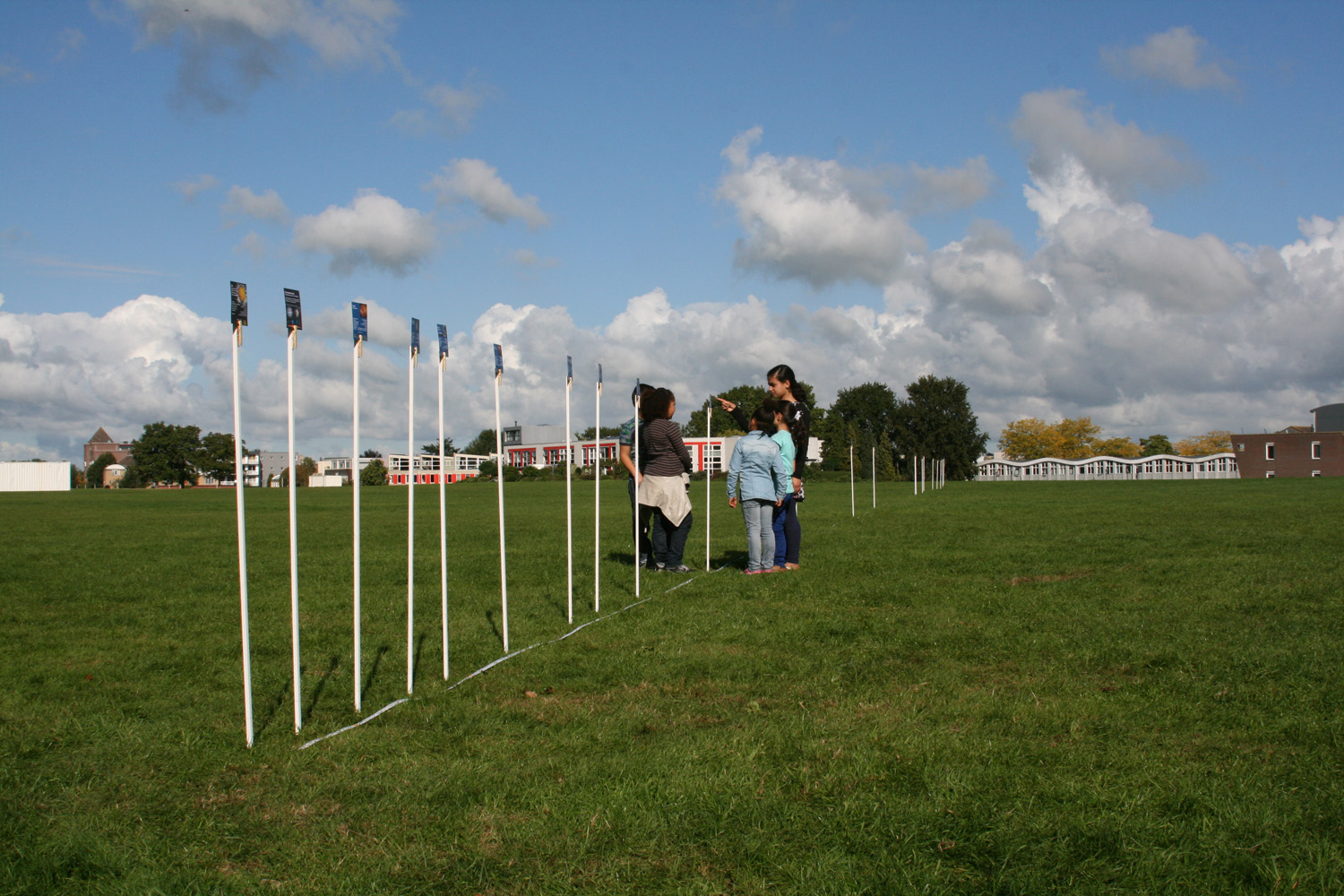
Placed at the correct distances they perfectly illustrate these distances (and the sizes!), the enormous size of the Solar System, the even greater distances to neighbouring stars and the emptiness of space.
Putting up the scale model is easy. You can hang them on walls, place them on the provided stands or use sticks that you put in the ground at the right distances (see picture on the right).
And it is very low budget, so affordable to everyone.
English Solar System scale model!
We now have two English sets, a basic set of 32 and a supplement of 24 cards.
You can order these sets on this page.
See below (scroll to the bottom).
User Guide
To help you use the Solar System scale model optimally, we have made this User Guide.
Right: the Solar System scale model in use. Simple wooden sticks were used, with pegs glued on top of them.
Below: the front and back side of the Jupiter card, and the explanation of the different pieces of information.
Please note: the yellow numbers on the bck sides are part of the index system: the card with that number explains the subject (in italics) in more detail. This allows it to be a concise Encyclopeadia of the Solar System!
.jpg)
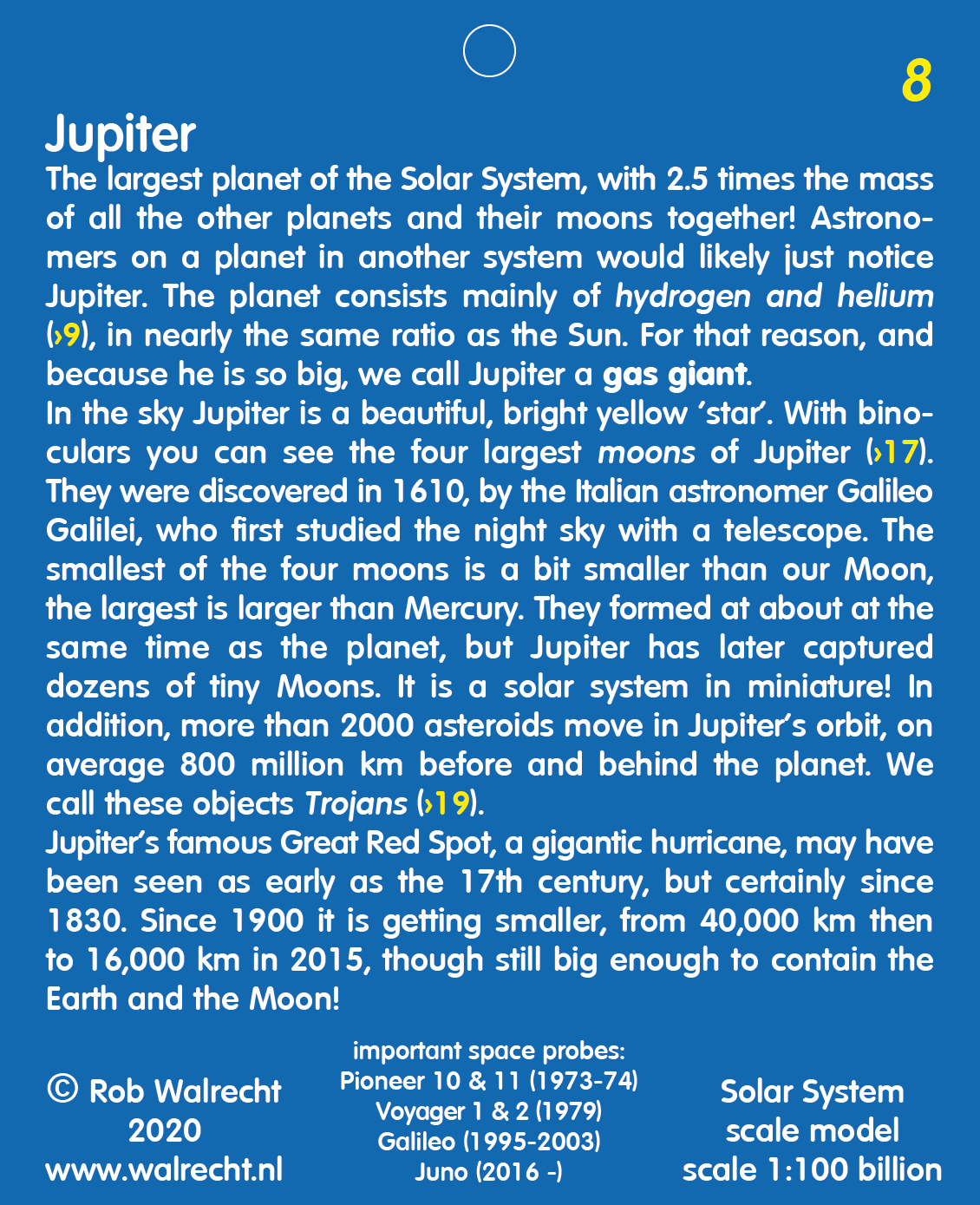
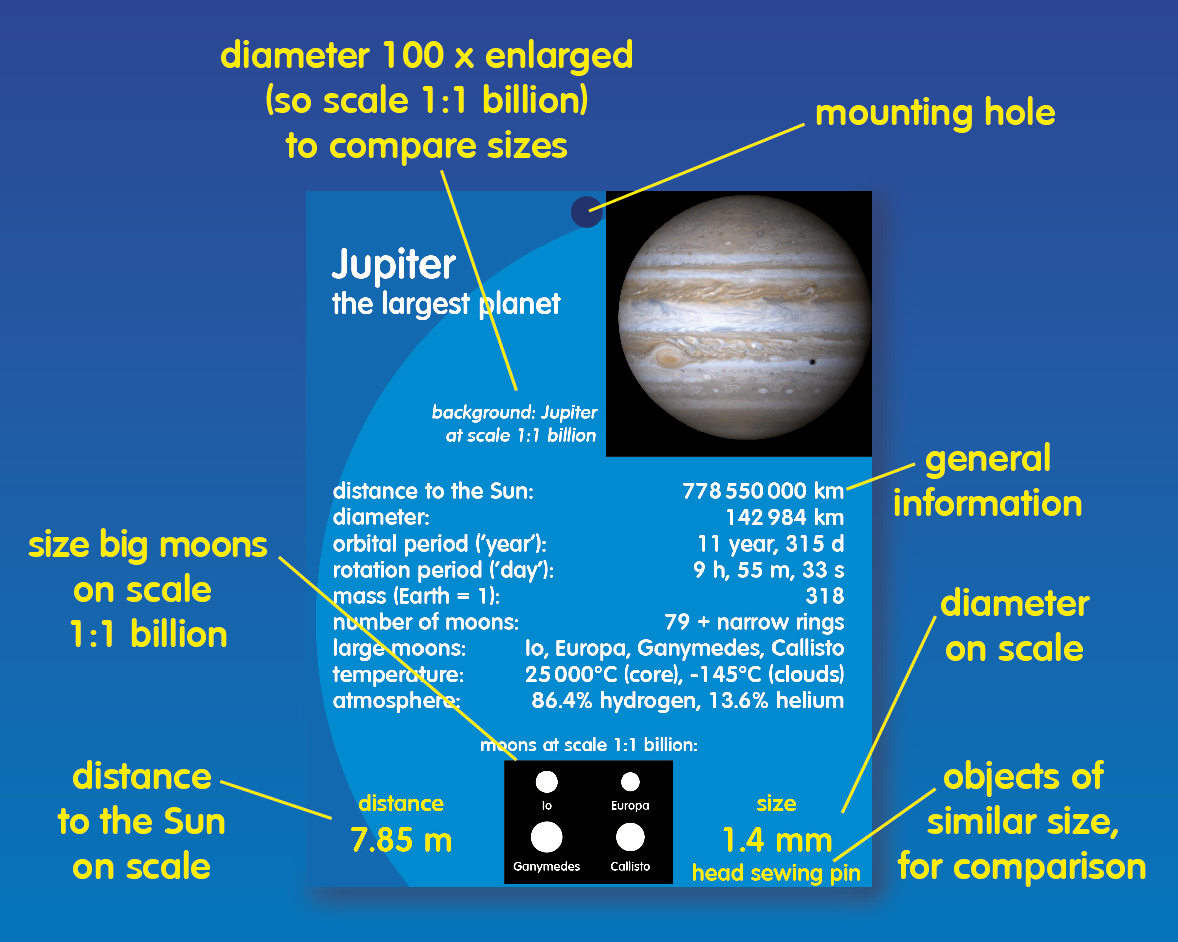
The complete model, when placed up to Pluto at its present distance, is 50 m (160 ft) long. The average distance for Pluto is at 59 m (194 ft) and it can be as far away as 75 m (247 ft)! We recommend to place Eris (an additional card) as well: at 101 m!
This model is not only well suited for kids themselves or the complete family, but also perfect as teaching tool! It provides all the information for papers and talks.
The cards are accompanied by special bases and also contain little holes. So they can be placed on tables or hung on the walls, or fixed on small sticks that are stuck into the ground.
Below the Dutch Basic Set (left) and the Supplemental Set. On the backs of the sets is all information and an overview of all the cards in a set.
In 2020 we have brought out two new English sets for the Solar System scale model: a basic set of 32 cards, and a supplement of 24 cards. Please check the order page.
Below you will find pictures of the front and rear sides of the sets, and an overview of the cards (and thus the subjects).
Basic Set (32 cards):
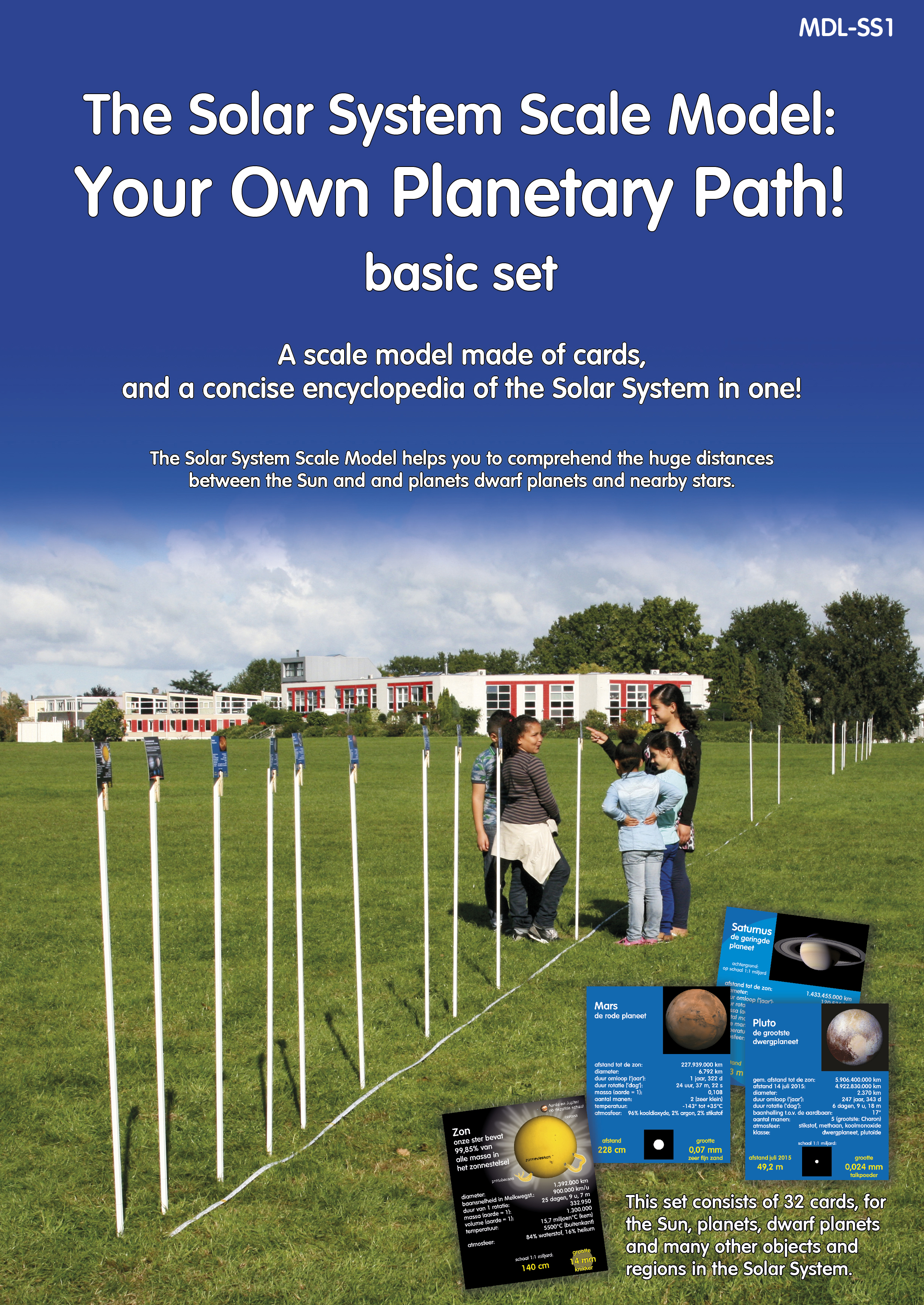
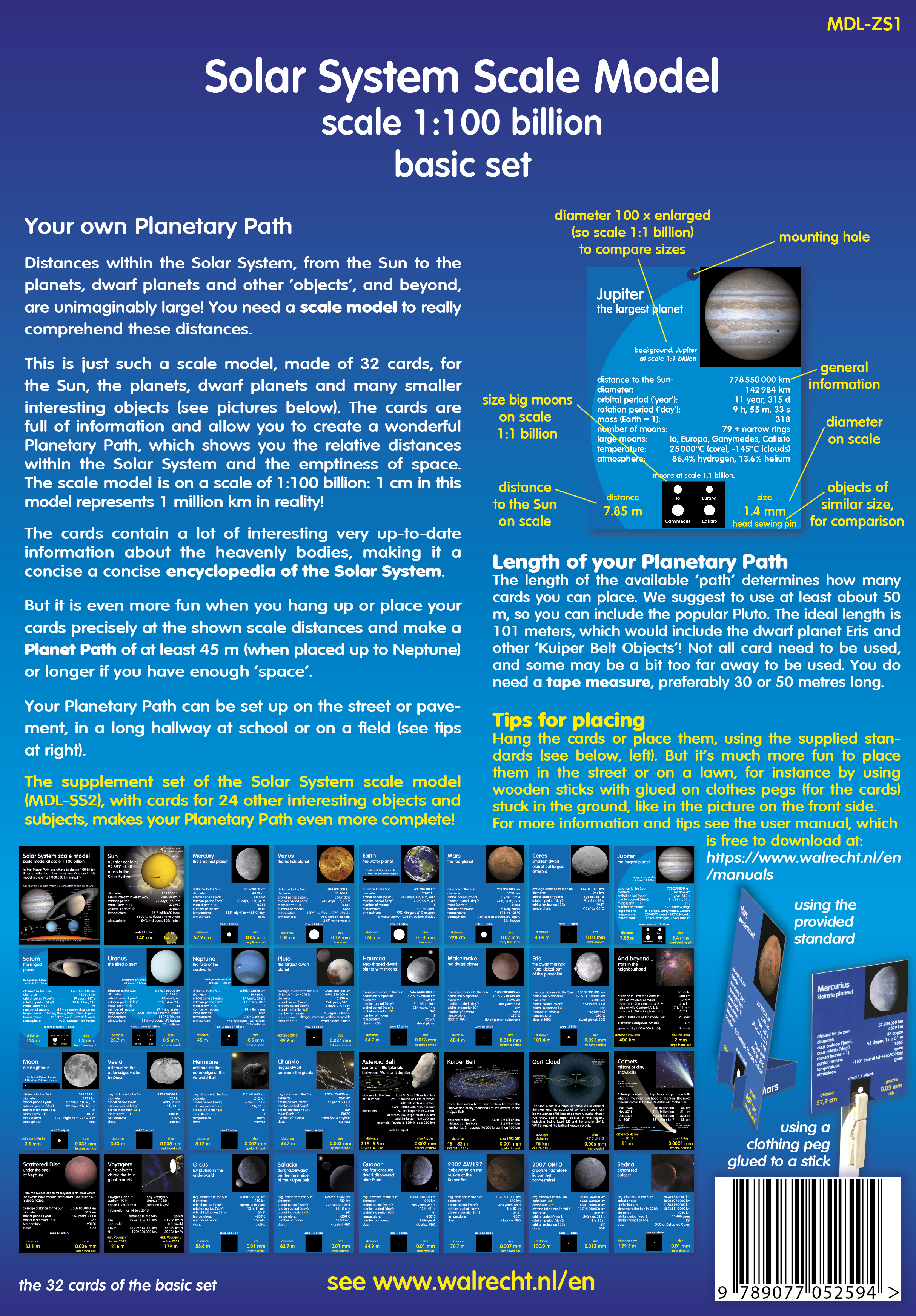
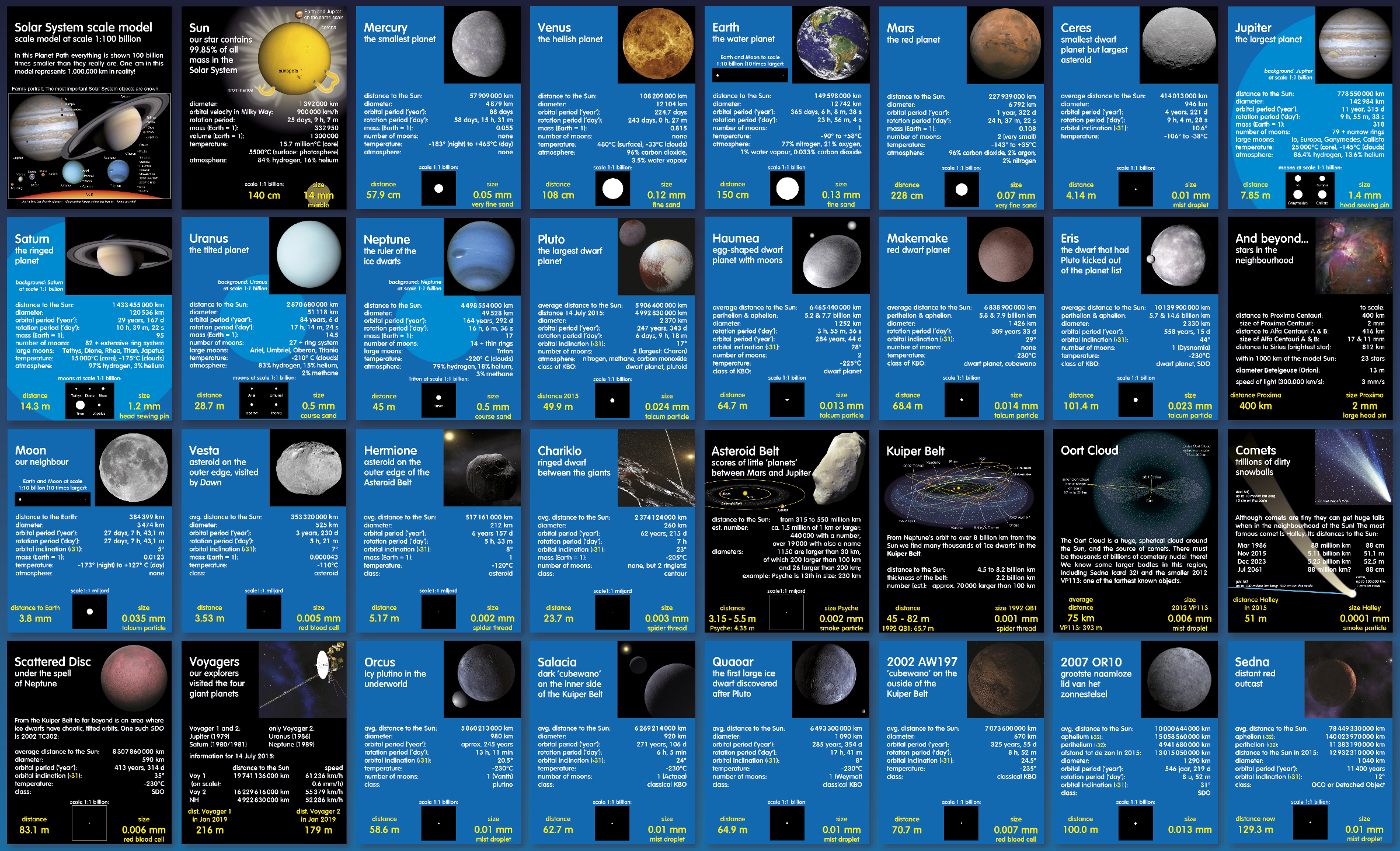
Supplement (24 cards):
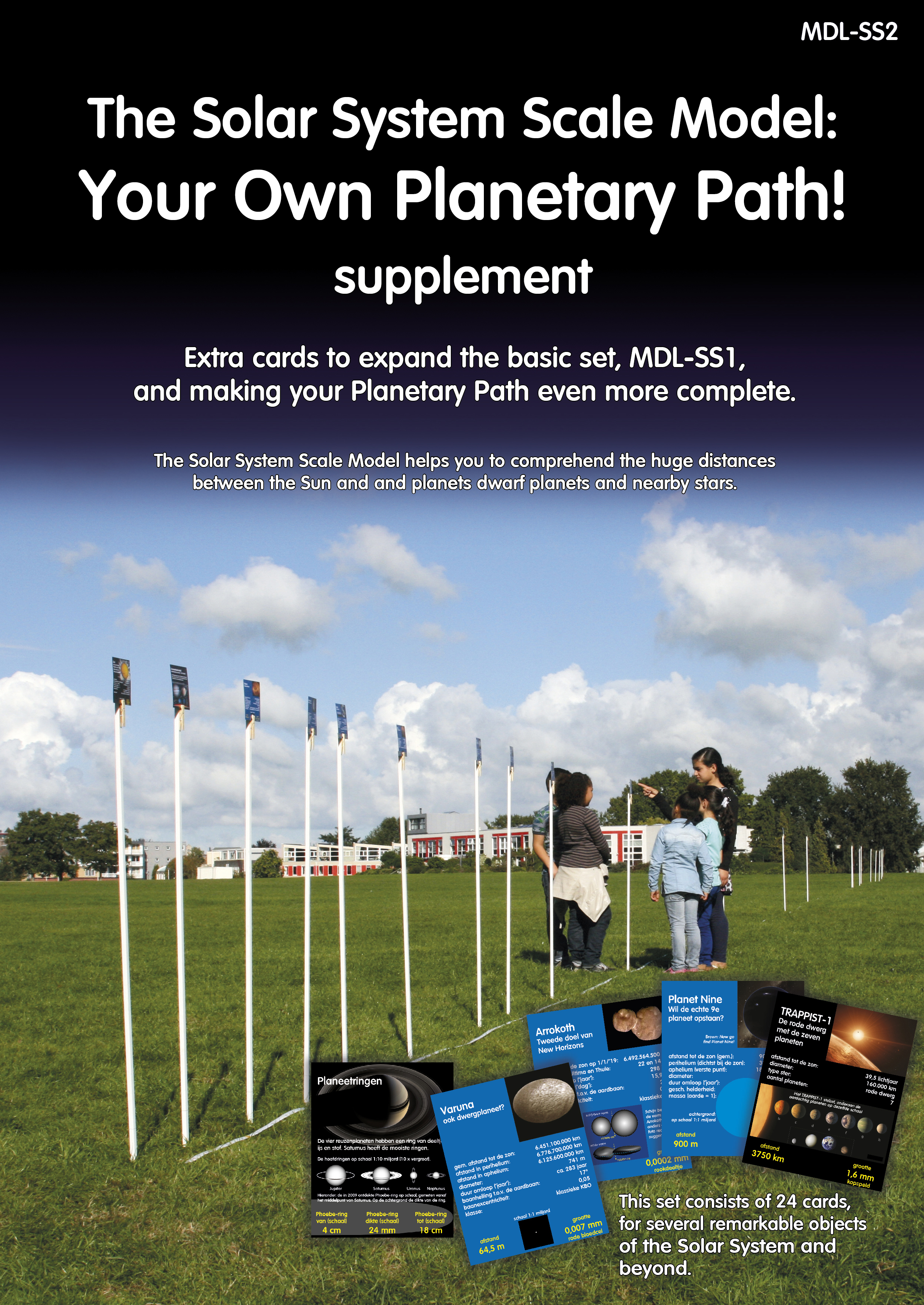
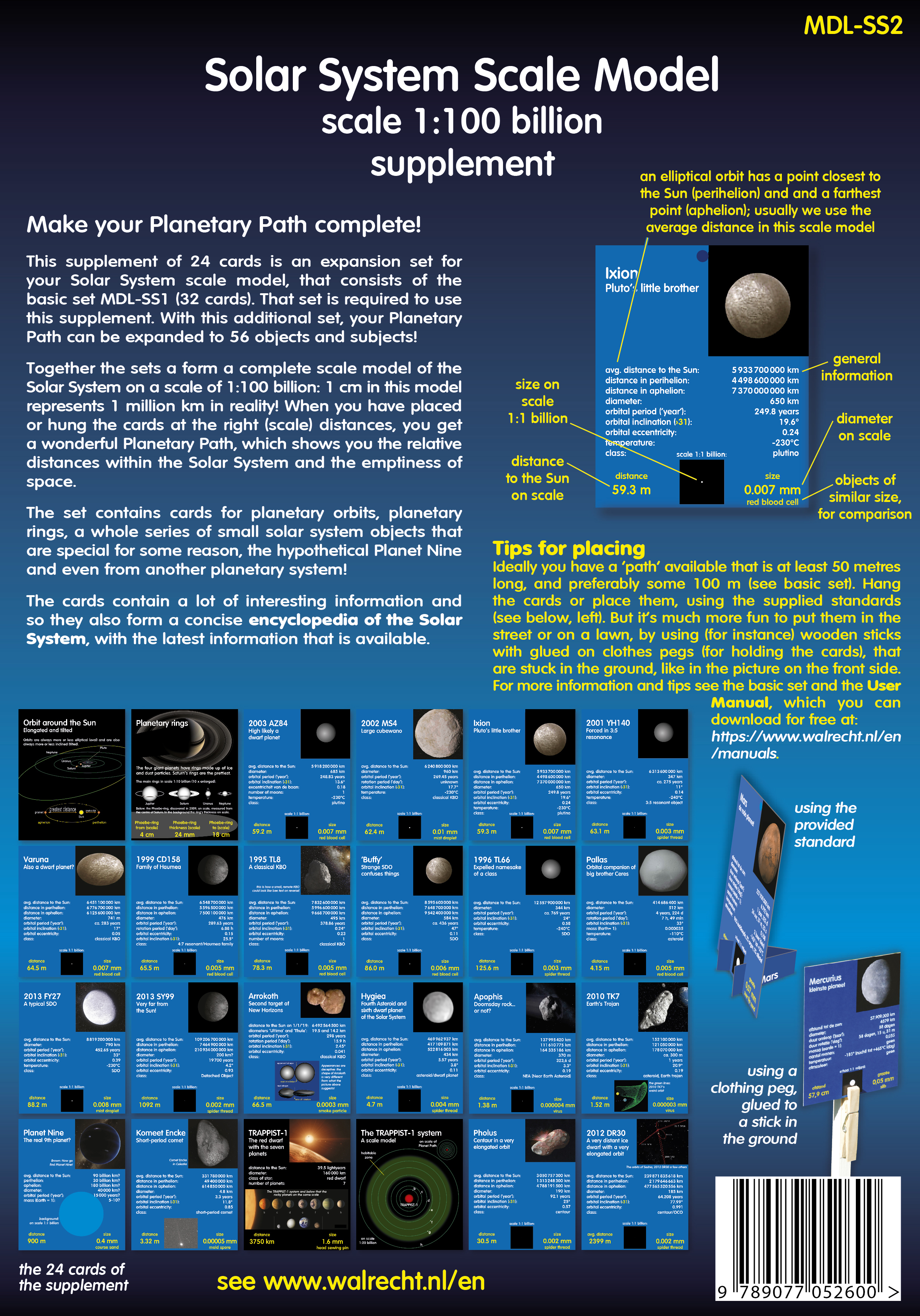
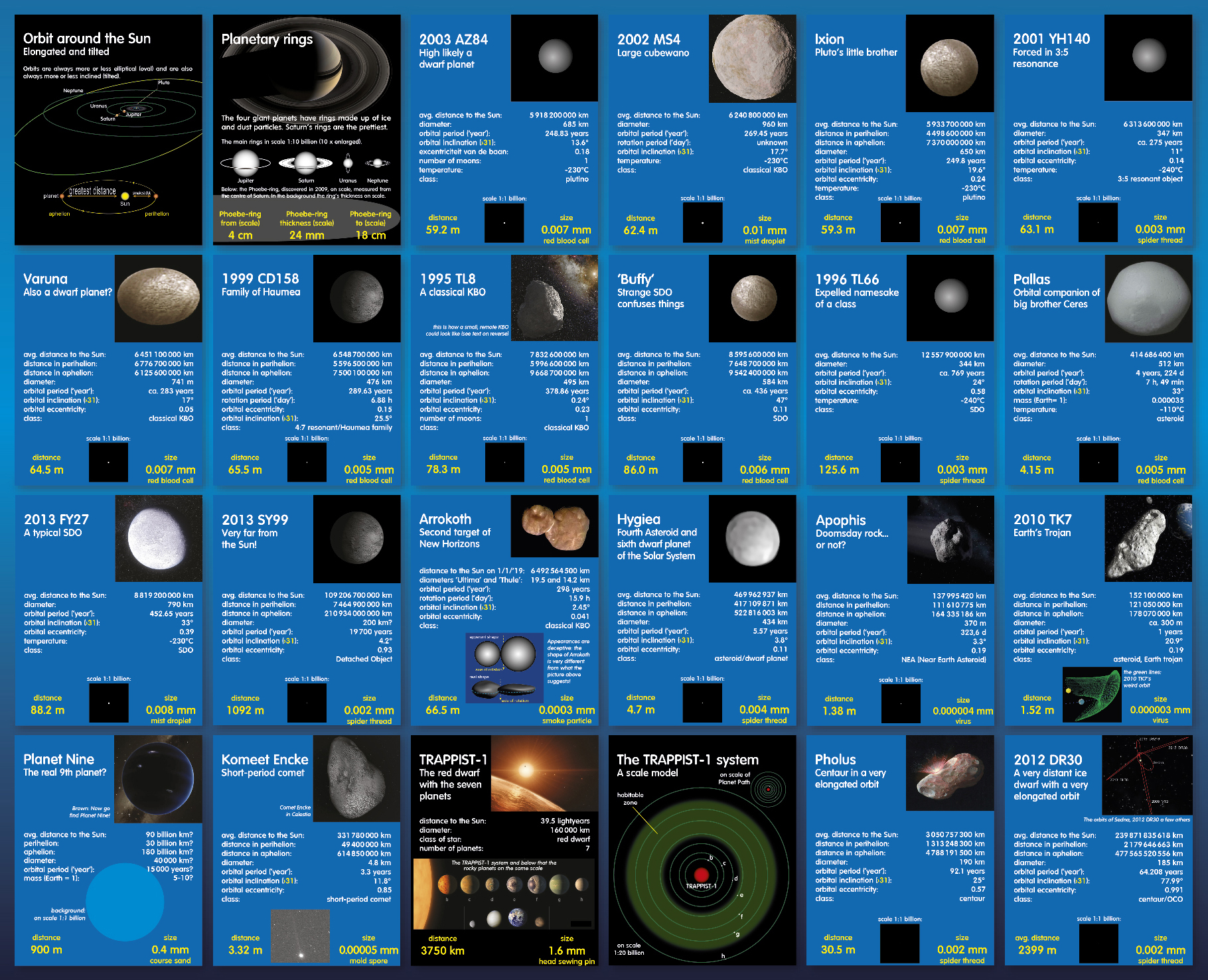
More information
The English scale models both consist of 16 cards (9.5 x 11.7 cm), for the Sun, the planets, the Moon, asteroids, comets, the Voyager spacecraft and the ‘ice dwarf’ Quaoar, discovered in 2002. The cards are full of interesting information so together they form a concise encyclopaedia of the Solar System!
Its most important purpose, however, is to provide the best possible representation of the distances within our own Solar System and the emptiness of space, when it is completely 'placed'. The sizes to scale are given as well as ‘100 times enlarged' (scale 1:1 billion), to allow better comparison of the sizes. An extra card, named ‘Further away…’, provides information on the nearest next star, Proxima Centauri, and several other interesting objects.
The front sheet contains more general information about the Solar System and an explanation of some information shown on the cards (like ‘mass’).
| Object/subject | distance to the Sun | type |
| Scale model | 0 | information |
| Sun | 0 | star |
| Mercury | 0,58 | rocky planet |
| Venus | 1,08 | rocky planet |
| Earth | 1,50 | rocky planet |
| Mars | 2,28 | rocky planet |
| Ceres | 4,14 | asteroid/dwarf planet |
| Jupiter | 7,8 | gas giant |
| Saturn | 14,3 | gas giant |
| Uranus | 28,7 | ice giant |
| Neptune | 45,0 | ice giant |
| Pluto | 49,9 | classical KBO/dwarf planet |
| Haumea | 64,7 | classical KBO/dwarf planet |
| Makemake | 68,4 | classical KBO/dwarf planet |
| Eris | 101,4 | SDO/dwarf planet |
| Farther… (Proxima) | 397 km | stars |
| Moon | 0,004 | satellite, rocky world |
| Vesta ('inner asteroid') | 3,53 | asteroid |
| Hermione ('outer asteroid') | 5,17 | asteroid |
| Chariklo (+ Chiron and Pholus) | 23,7 | centaur |
| Asteroid belt (16 Psyche) | 4,4 | region/asteroid |
| Kuiper Belt (1992 QB1) | 65,7 | region |
| Oort Cloud (2012 VP113) | 393 | region |
| Comets - Halley now | 51,1 | comet |
| Scattered Disc (and TC302) | 83,1 | region/SDO |
| Voyager 1 | 216 | space probe |
| Orcus | 58,6 | plutino |
| Salacia | 62,7 | classical KBO |
| Quaoar | 64,9 | classical KBO |
| AW197 | 71,1 | classical KBO |
| OR10 | 100,0 | SDO |
| Sedna (and 2012 VP113) | 784 | OCO, Sednoid |
| Object/subject: | distance to the Sun | type of object |
| Orbits | 0 | info |
| Planetary rings | 14,4 | rings |
| 2003 AZ84 | 59,2 | plutino |
| 2002 MS4 | 62,4 | classical KBO |
| Ixion | 59,4 | plutino |
| 2001 YH140 | 63,1 | 3:5 res |
| Varuna | 64,2 | classical KBO |
| 1999 CD158 | 65,5 | det/4:7 res |
| 1995 TL8 | 78,6 | det |
| 2004 XR190 | 86,0 | SDO/Det |
| 1996 TL66 | 125,6 | SDO |
| Pallas | 4,15 | planetoïde/dwergplan. |
| 2013 FY27 | 88,2 | SDO |
| 2013 SY99 | 1092 | Det |
| Ultima Thule | 66,4 | classical KBO |
| V774104 | 154,0 | OCO |
| Apophis | 1,38 | NEA |
| 2012 TK7 | 1,52 | Trojan |
| Planet Nine | 1000 | planet |
| Comet Encke | 3,32 | comet |
| TRAPPIST-1 system | 3735 km | exoplanet |
| TRAPPIST-1 system - orbits | - | exoplane |
| Pholus | 30,5 | centaur |
| 2012 DR30 | 2.398,7 | centaur |